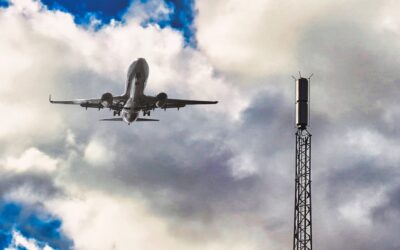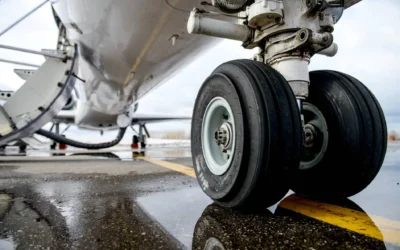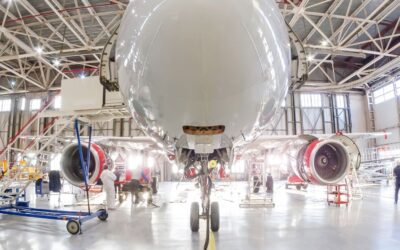How Landing Gear Works
Landing gear is the only part of the aircraft that makes contact with the ground and supports the weight of the craft when the plane is not in flight. Whether the plane is at rest, taxiing, turning, or accelerating for takeoff, the landing gear is responsible for transmitting those forces between the aircraft and the ground.
Well-designed landing gear is critical to safe takeoff and landing. Landing gear must be designed for exact balance, so the plane can tilt slightly for takeoff without the tail striking against the surface of the runway.
The tires and wheels must withstand the same pressures as a standard automotive tire: bumps, loads, cornering, and other forces.
Landing Gear Design Process
Some aircraft manufacturers make the mistake of waiting until late in the process to begin designing the landing gear. Because the design and integration of the landing gear affects the entire aircraft, waiting too long to think about landing gear is a mistake—and can necessitate a large-scale redesign. The structure of the landing gear must be able to bear the load of the plane, and the plane itself must be built to include space for the landing gear to be stored while in flight.
Client Goals
It’s important to start with a conversation about the overall design of the plane, as well as considerations such as performance and safety requirements, timeframe, technology, resources, and budget. These factors may affect material and design choices.
Choosing Configuration
Aircraft manufacturers may have multiple landing gear configurations to choose from. Some options are lighter than others, some offer better on-the-ground visibility to the pilot, and others are better suited to different types of landing surfaces, such as groomed runways versus field environments. The right choice depends on the purpose of the plane and where it will be used. In any case, it is vital to choose a configuration that offers stability and equilibrium.
Meeting Specifications
Each type of aircraft may be required to meet different specifications and regulatory requirements. It is crucial to understand which specifications must be considered when designing landing gear.
Analysis, Testing, & Qualification
Today’s testing technology allows manufacturers and designers to use models and real-world tests to recreate stress, fatigue, and other forces in a controlled environment. This allows for careful analysis of each component of the landing gear to ensure that it can withstand its environment and perform as expected. Designers should be mindful to include time for analysis, testing, and qualification in the design timeline.
Design Factors to Consider
There are several important variables to consider when designing landing gear for aircraft of any size and variety. Landing gear is subjected to a variety of forces while in service, and understanding these forces is key to designing an effective landing gear assembly.
Load Weight During Landing
Of course, aircraft landing gear must support the weight of the plane while taxiing and while at rest. However, the landing gear must also be able to withstand much greater loads and pressures while the aircraft is actually landing. Bumps and other hazards on the landing surface also add additional load to the landing gear.
Side Loads
It is vital to design a landing gear structure strong enough to withstand side loads. A side load is any pressure placed on the aircraft’s wheels and landing gear from the side due to cornering, turning, or crosswinds. This largely depends on where the plane will be used. Side loads put a lot of pressure on the joint where the landing gear attaches to the aircraft and may even cause bending.
Landing Distance
Landing distance is an important factor to consider when designing landing gear. For example, an aircraft that will land on aircraft carriers needs landing gear that can withstand a firm, swift, short-field landing, rather than the slow, gentle descent of a commercial aircraft landing on a long, paved runway.
Aircraft Manufacturing from NMG
NMG Aerospace has spent decades refining our landing gear manufacturing methods for efficiency and precision. Every single member of our team is an expert on lean manufacturing, which translates to faster delivery of top-quality parts made exactly to spec that work seamlessly once assembled. We design exceptionally streamlined manufacturing processes that make each component we produce as economical as possible, saving time, cost, and other resources.
NMG has years of experience manufacturing high quality landing gear components based on exacting specifications. To learn more about our manufacturing methods and how we can serve you, talk to a member of our team >




0 Comments